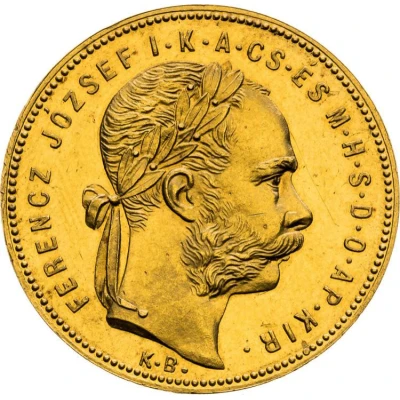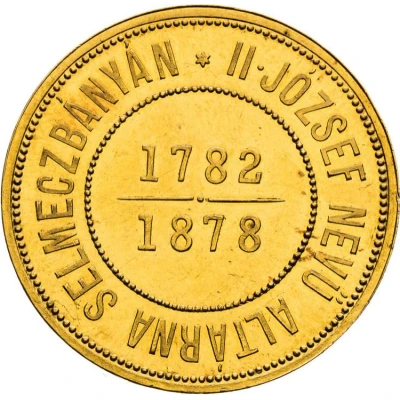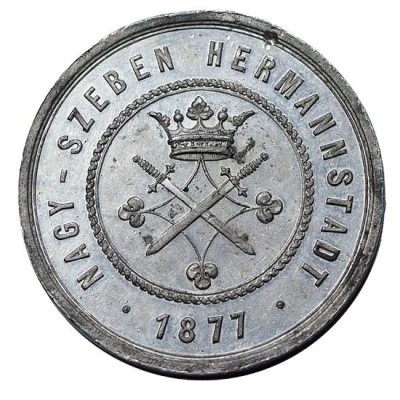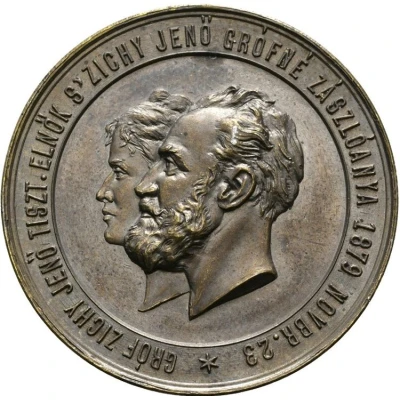


© Macho & Chlapovič a.s.
Completing the Construction of Drainage Adit - Francis Joseph I
1878 year| Gold (.986) | 22.5 g | 29 mm |
| Location | Hungary |
|---|---|
| King | Francis Joseph I (Franz Joseph I) (1848-1916) |
| Type | Medals › Commemorative medals |
| Year | 1878 |
| Composition | Gold (.986) |
| Weight | 22.5 g |
| Diameter | 29 mm |
| Shape | Round |
| Technique | Milled |
| Demonetized | Yes |
| Updated | 2024-11-12 |
| Numista | N#140373 |
|---|---|
| Rarity index | 94% |
Reverse
Dates surrounded by inscriptions.
Script: Latin
Lettering:
II JÓZSEF NEVŰ ALTÁRNA SELMECBÁNYÁN *
1782
1878
Translation: Completing the Construction of Drainage Adit Emperor Joseph II in Selmecbánya
Comment
Schemnitz Gulden belongs to the most valuable strikes of Franz Joseph I. reign and is sometimes also described as commemorative Schemnitz Gulden (germ. Schemnitzer Gedenkgulden). It was issued to commemorate the completion of the drainage adit of emperor Joseph II. in 1878. At the occasion of a successful completion of this important mining work lasting 96 years, it was decided to organize a great miner celebration and mint the commemorative medals. According to the information preserved from that period, at the end of 1878 the directory of the mining area sent pattern bronze strikes to the ministry of finance for approval. Only three pattern pieces were minted. The ministry dismissed this pattern strike and recommended to mint the years 1782 and 1878 on the reverse, denoting the years of starting and completion of works. It was also recommended to state the main text in a circular description within a circular strip. The ministry’s proposal was immediately executed. The design of the averse with the emperor’s portrait was identical with the common guldens, the design of the reverse commemorated the event. The Schemnitz Gulden was issued by the Hungarian royal mint directory in Schemnitz. Golden struck pieces in weight of the contemporary 70 Franks were meant for some important personalities and the silver ones in the weight of one Gulden for mining technicians. Bronze strikes were not minted because of a high price. Copper struck pieces were created instead and distributed among construction workers.Info taken from Macho & Chlapovič



